11th M-class solar flare erupts from Region 2403, geomagnetic storm in progress
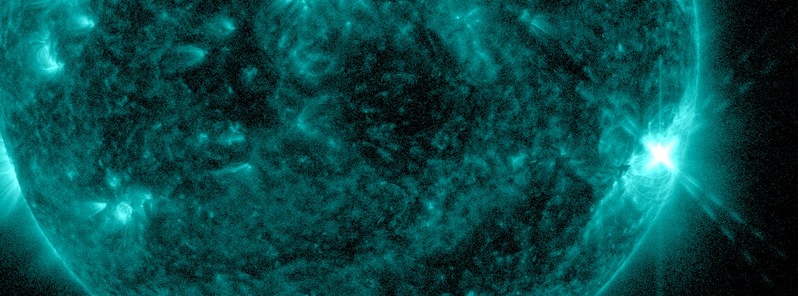
On August 28, 2015, departing Region 2403 produced its 10th and 11th M-class solar flare since it rotated onto the Earth side of the Sun. The first event started at 13:04, peaked at 13:16 as M2.2, and ended at 13:23 UTC. The second event started at 18:56, peaked at 19:03 as M2.1, and ended at 19:06 UTC.
There were no radio signatures that would suggest Coronal Mass Ejections (CMEs) were produced.
This region still has 'Beta-Gamma-Delta' magnetic configuration, but is decaying and about to start its farside rotation.
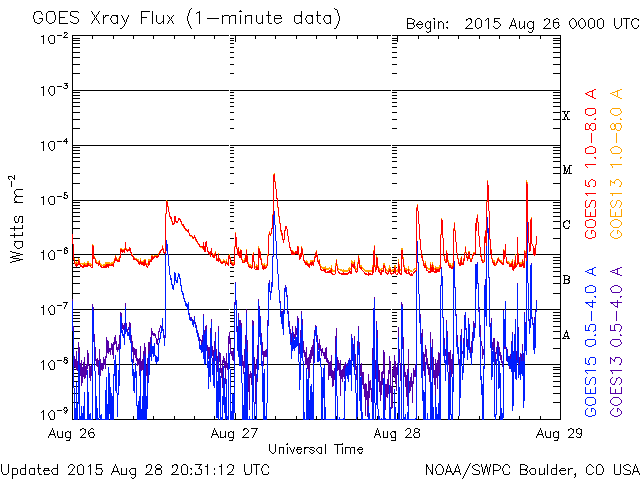
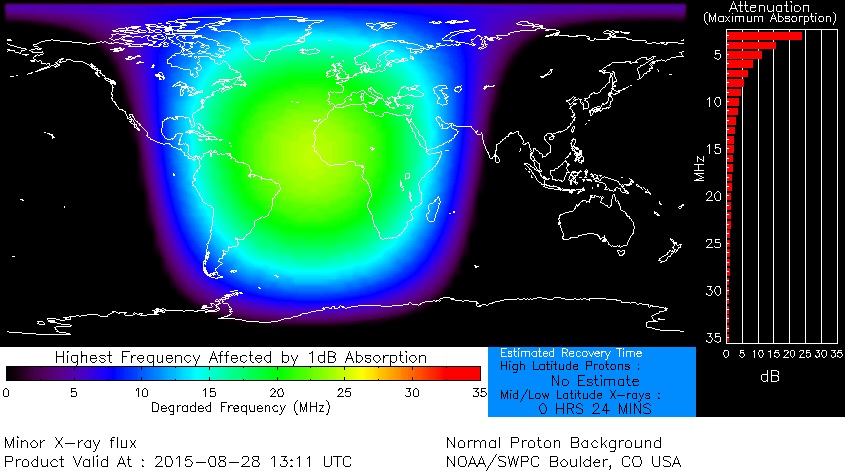
D-RAP data for M2.2 solar flare on August 28, 2015.
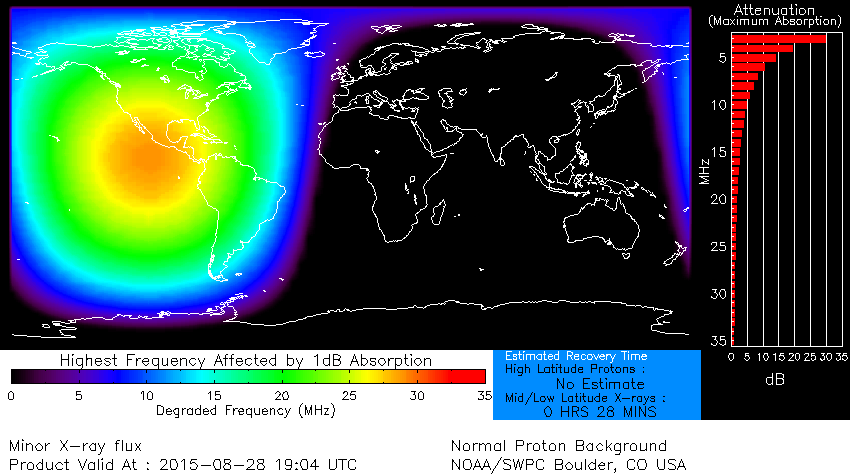
D-RAP data for M2.1 solar flare on August 28, 2015.
Sunspots
There are currently only two numbered sunspot regions on the Earth side of the Sun.
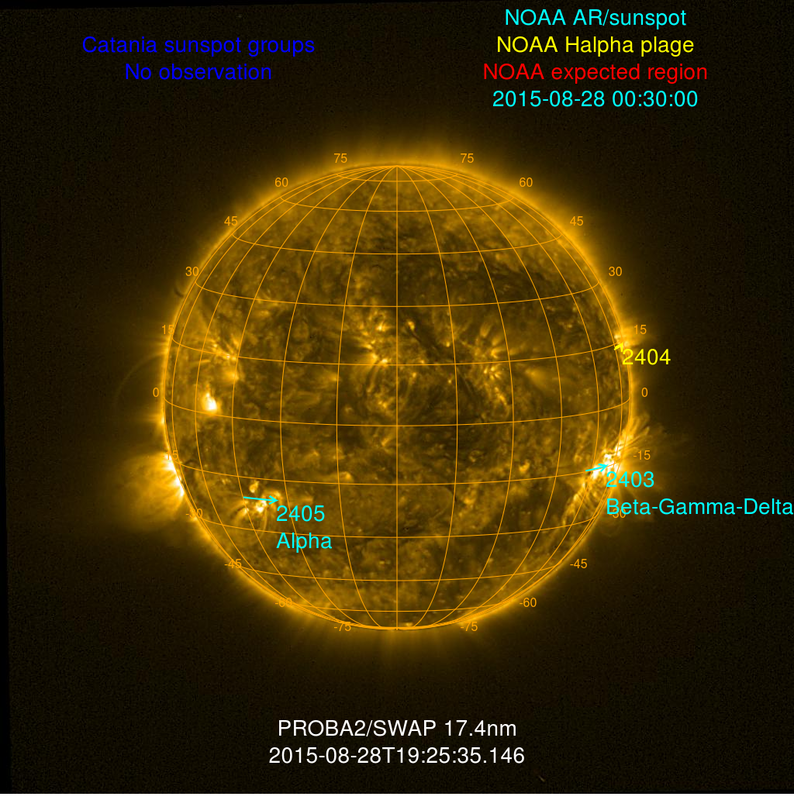
Sunspots on August 28, 2015. Image credit: ESA PROBA2/SWAP.
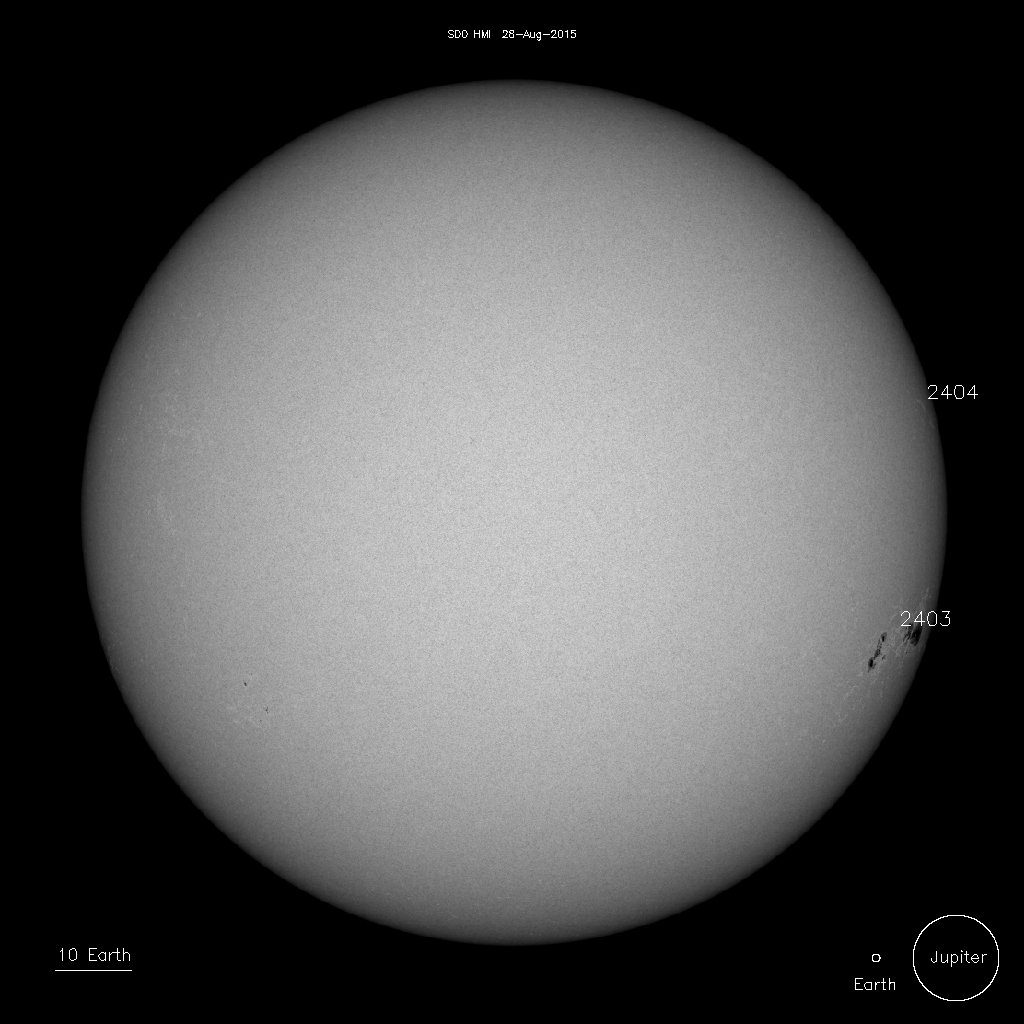
Sunspots on August 28, 2015. Image credit: NASA SDO/HMI.
2403 – Beta-Gamma-Delta
2405 – Alpha
Geomagnetic storm in progress
Geomagnetic field was at active to major storm (G2-Moderate) levels on August 27 and 28 due to slow-moving August 22 CME.
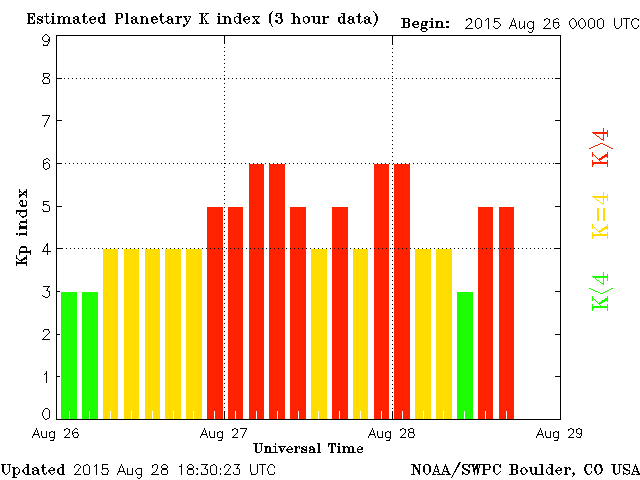
Solar wind parameters are enhanced and are expected to continue at these levels on August 28 in response to lingering CME effects and the arrival of co-rotating interaction region (CIR) ahead of a negative polarity coronal hole high speed stream (CH HSS).
SWPC forecasters expect solar wind velocities to increase late August 28 and into August 29 as the CH HSS becomes geoeffective.
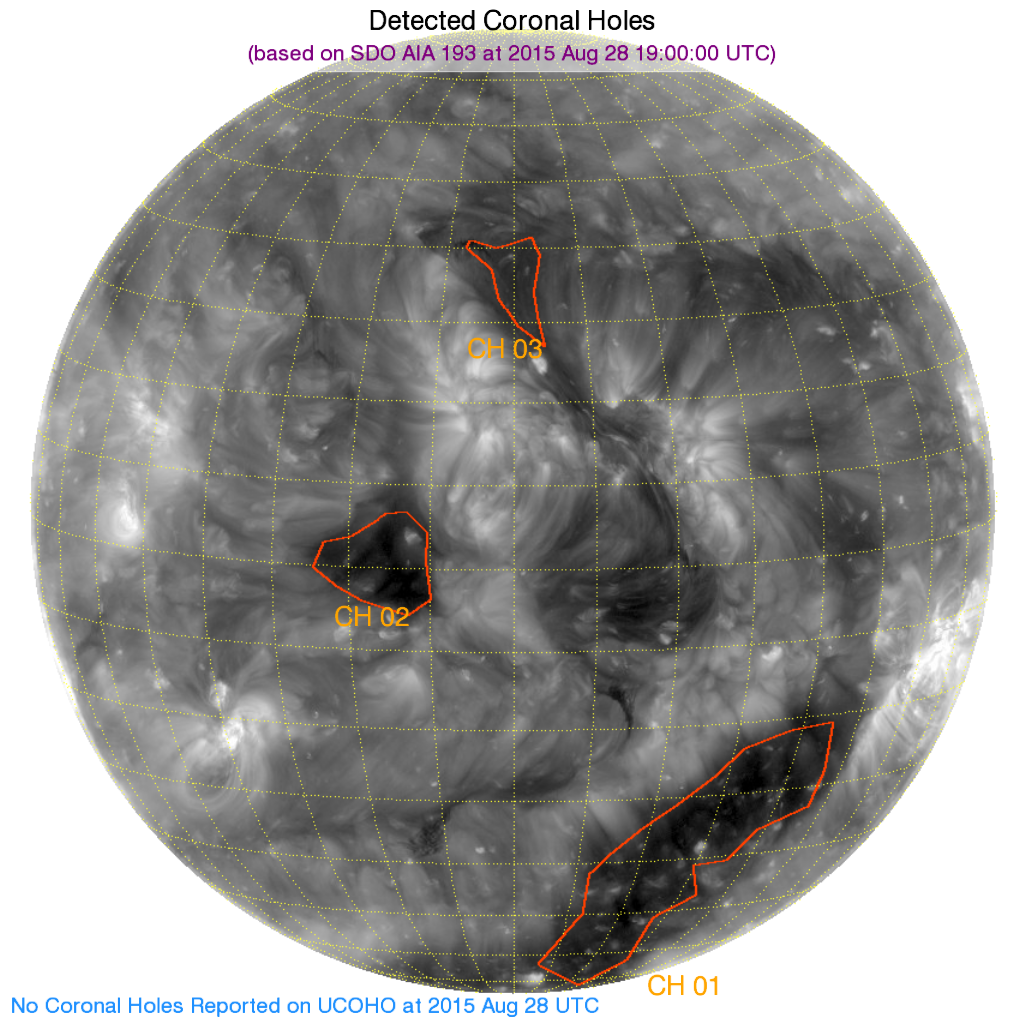
At 20:59 UTC on August 28, Geomagnetic K-index of 6 (G2 – Moderate) threshold was again reached:
***
Space Weather Message Code: ALTK06
Serial Number: 358
Issue Time: 2015 Aug 28 2101 UTC
ALERT: Geomagnetic K-index of 6
Threshold Reached: 2015 Aug 28 2059 UTC
Synoptic Period: 1800-2100 UTC
Active Warning: Yes
NOAA Scale: G2 – Moderate
NOAA Space Weather Scale descriptions can be found at
www.swpc.noaa.gov/noaa-scales-
Potential Impacts: Area of impact primarily poleward of 55 degrees Geomagnetic Latitude.
Induced Currents – Power grid fluctuations can occur. High-latitude power systems may experience voltage alarms.
Spacecraft – Satellite orientation irregularities may occur; increased drag on low Earth-orbit satellites is possible.
Radio – HF (high frequency) radio propagation can fade at higher latitudes.
Aurora – Aurora may be seen as low as New York to Wisconsin to Washington state.
***
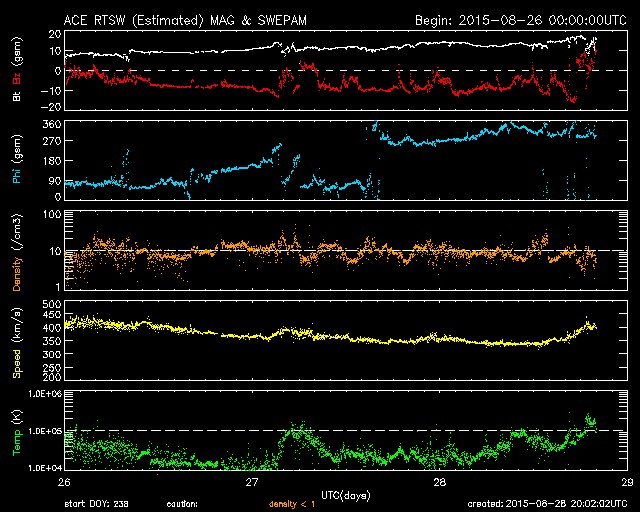
A gradual decrease in solar wind parameters is expected on August 30 as CH HSS effects begin to wane.
Featured image: M2.2 solar flare on August 28, 2015. Credit: NASA SDO/AIA 131 at 13:16 UTC.

Commenting rules and guidelines
We value the thoughts and opinions of our readers and welcome healthy discussions on our website. In order to maintain a respectful and positive community, we ask that all commenters follow these rules.